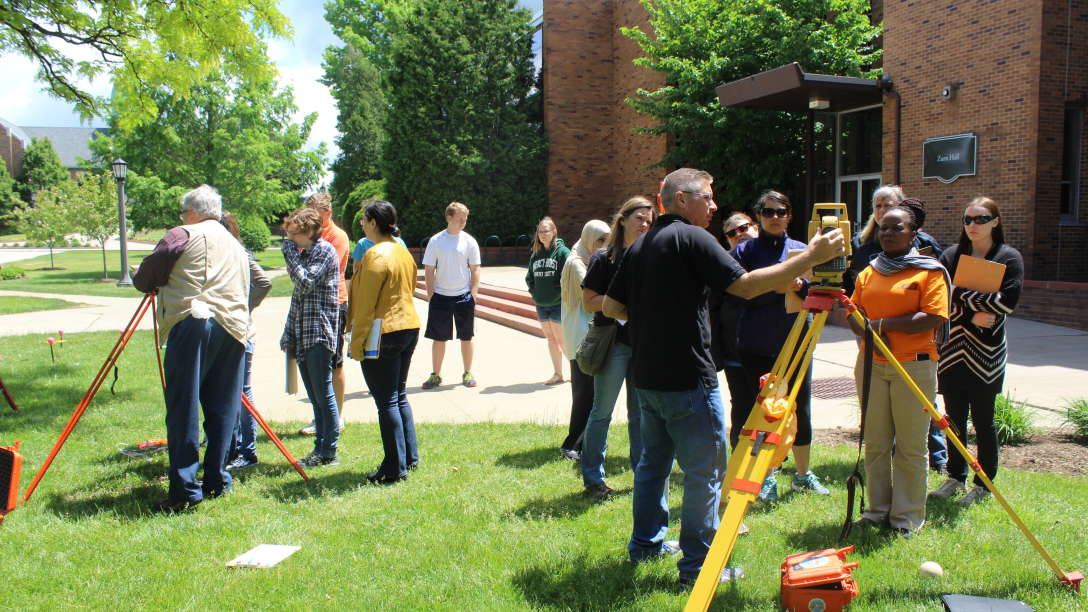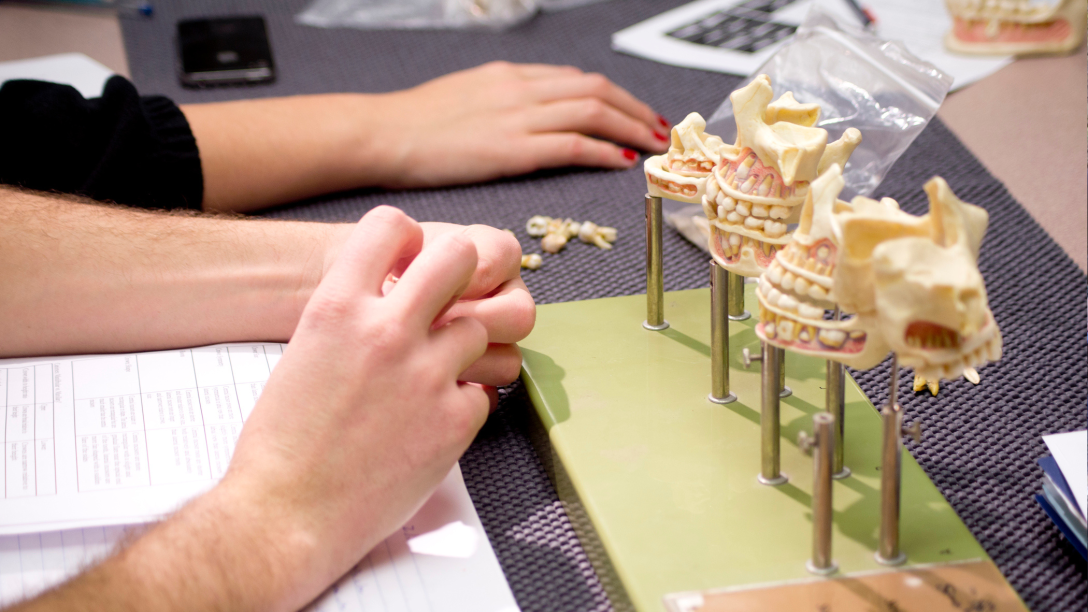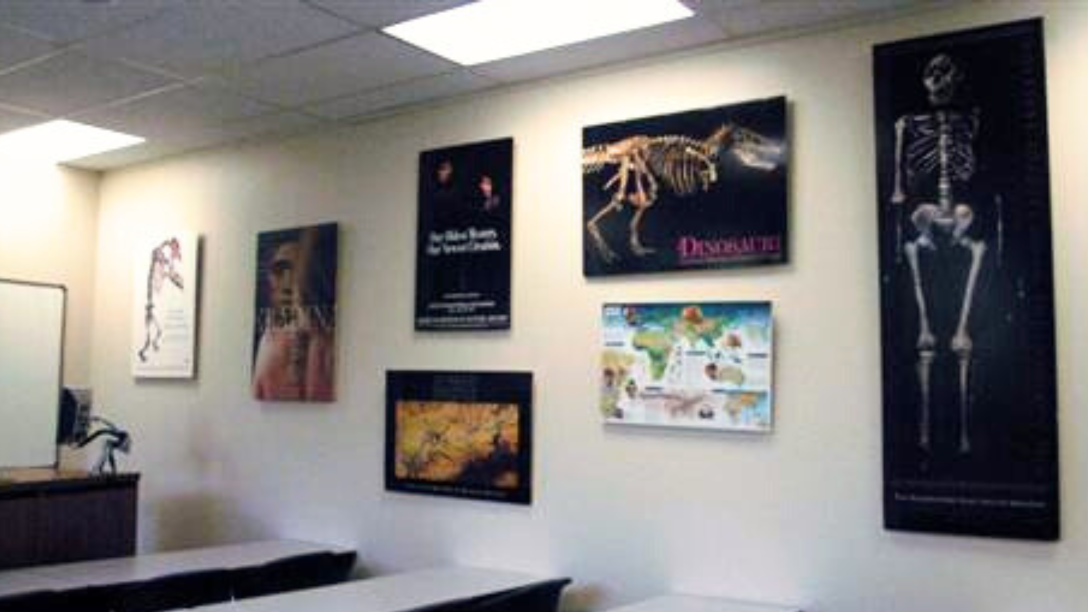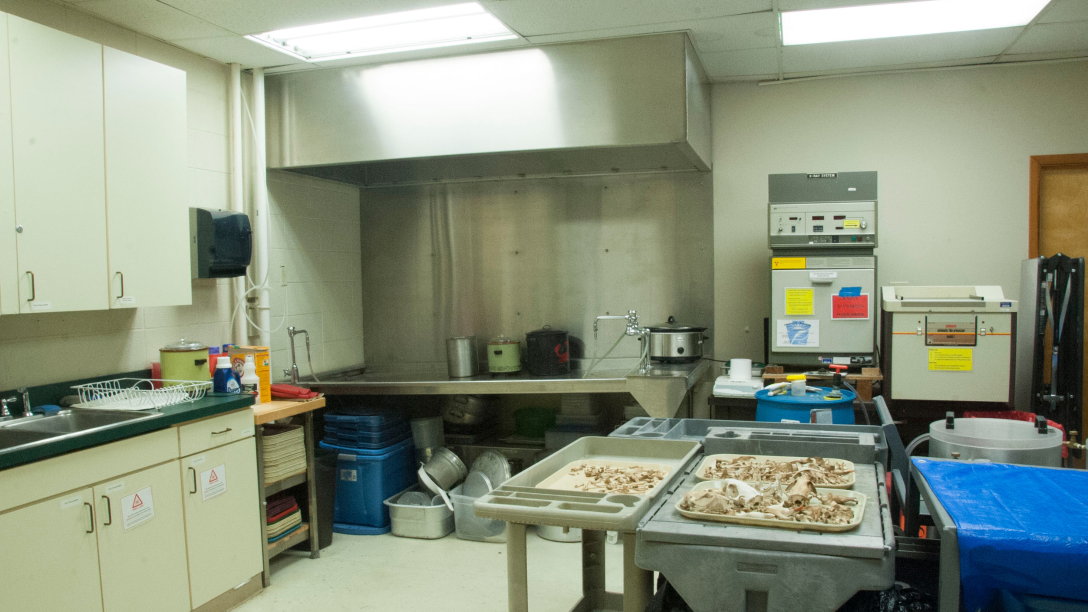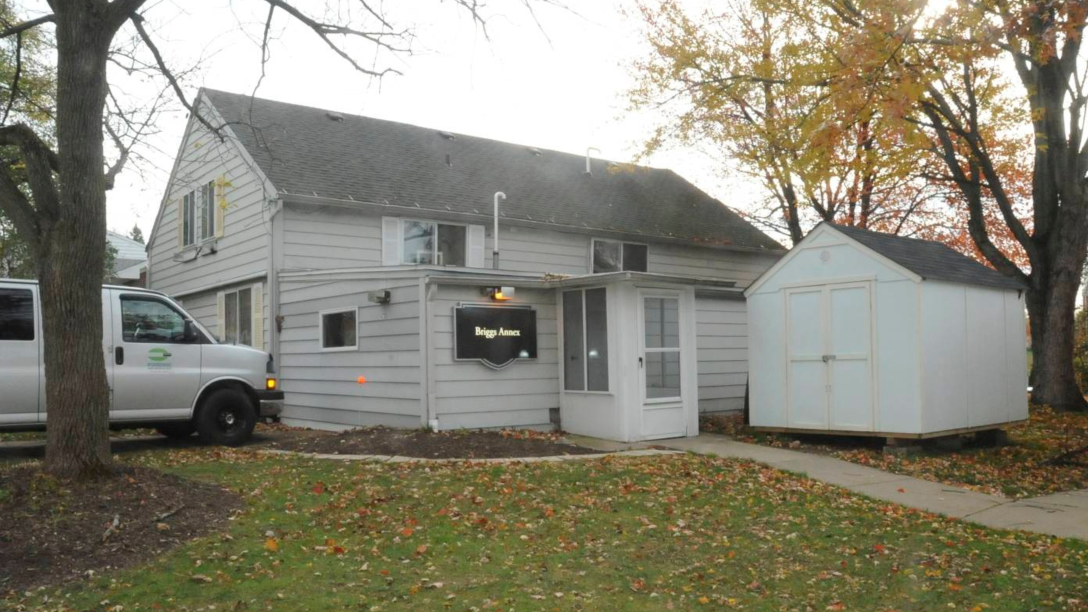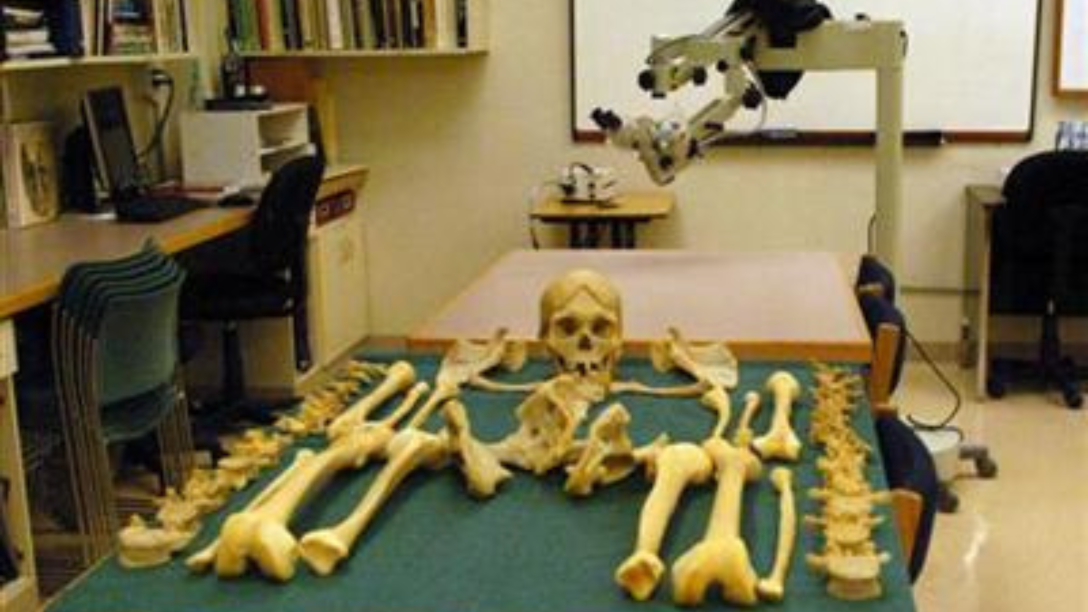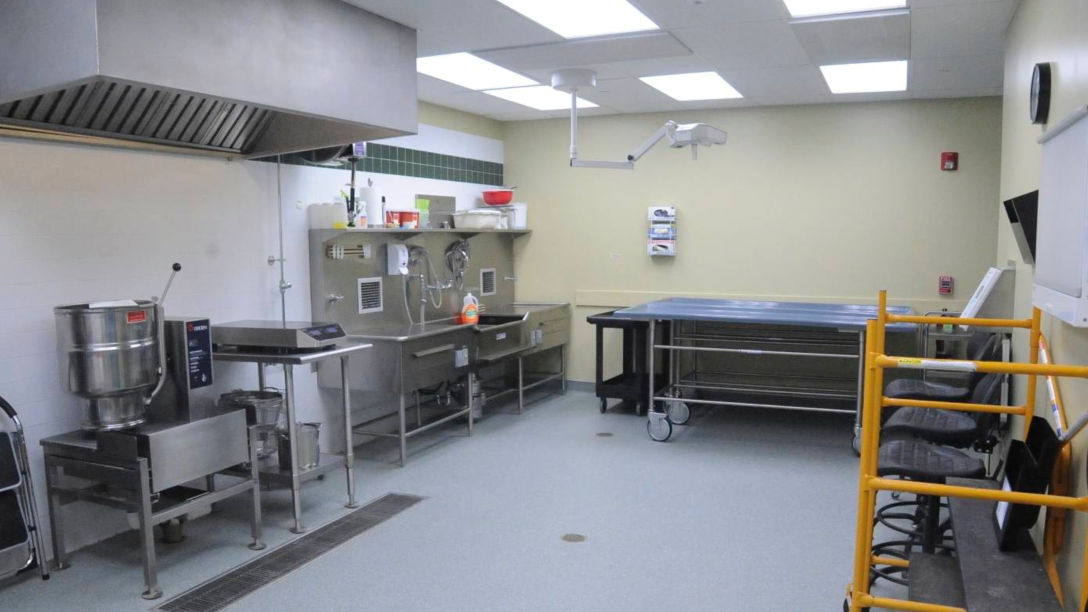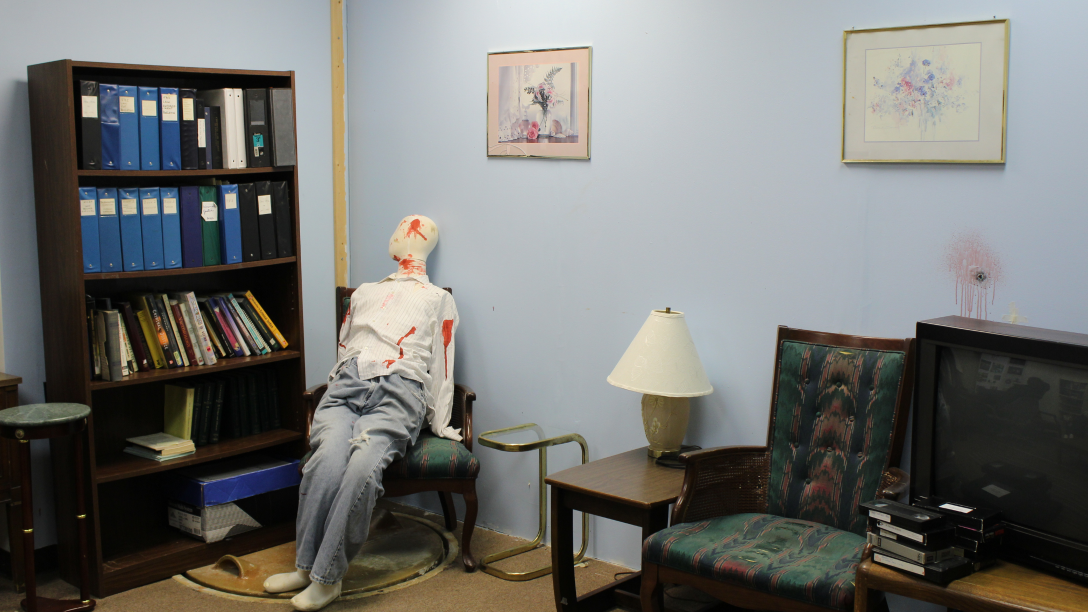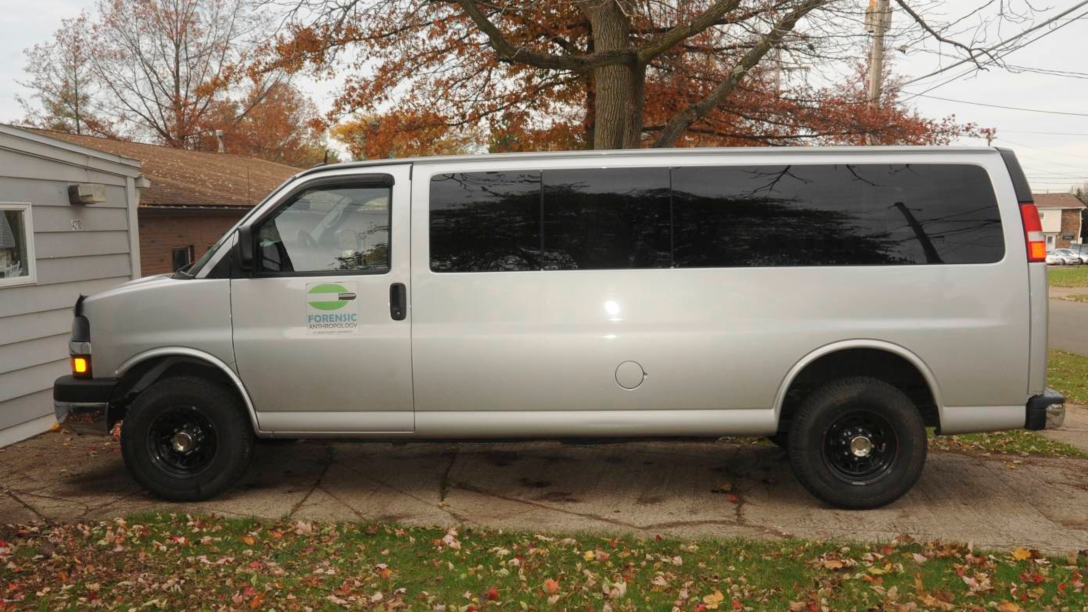Applied Forensic Sciences
Are you eager to solve criminal cases in the real world? Our program is the first one in the country providing our students a comprehensive training and invaluable hands-on training.
The Mercyhurst University Program of Applied Forensic Sciences offers a multidisciplinary undergraduate major dedicated to educating students in matters related to science, forensic science, society and the law. Starting with a deep understanding of the natural sciences, students learn to identify, collect, analyze, and interpret forensic evidence through our multidisciplinary curriculum. Graduates are prepared to enter the workforce or pursue advanced degrees following their completion of the program.
B.S. in Applied Forensic Sciences
The Program of Applied Forensic Sciences at Mercyhurst University was created in 2002 in an effort to provide students with a solid undergraduate education in the general sciences, with a forensic science focus. Students graduating with a degree in Applied Forensic Sciences will be able to pursue a variety of career options from graduate school in the sciences (e.g., biology, chemistry, anthropology) to specific training programs in the field of forensic science and investigations.
The strength of our program will continue to reside in the Forensic Anthropology concentration, which arose out of the Program of Anthropology. This concentration focuses on the recognition and documentation of physical evidence at the outdoor crime scene and the analysis of human skeletal remains recovered from those contexts. These methods prove useful whether the crime scene involves a surface scatter of human remains, a buried body feature, a fatal fire site or a large-scale mass fatality incident.
The development of the undergraduate Applied Forensic Sciences Program represents the first truly multidisciplinary major at Mercyhurst that incorporates the major natural sciences (biology, chemistry, physics) and mathematics within the core curriculum. The program includes three concentrations:
- Criminalistics/Forensic Biology
- Forensic Anthropology
- Forensic Chemistry
The Mercyhurst core curriculum is enhanced by these three specialized concentrations which meet students' interests while reflecting the changing face of forensic science.
Mission Statement
The Mercyhurst University Program of Applied Forensic Sciences offers a multi-disciplinary undergraduate major dedicated to educating students in matters related to science, forensic science, society and the law. Students receive a solid natural science education, bolstered by the thematic forensic science courses. The program advances the student’s knowledge of science-based forensic fields of study and advocates critical thinking and problem-solving skills. Classroom learning is strengthened by strong, hands-on components of many courses. The Program of Applied Forensic Sciences stresses the importance of reasonable and ethical behavior in regard to the field of forensic science to all members of the program: faculty, staff and students.
Learning Outcomes
- Recognize, employ, and perform the basic and advanced principles, methods, and practices of the various forensic science disciplines
- Gain the ability to identify, collect, analyze, and interpret forensic evidence
- Critically analyze and interpret past and current research in the forensic sciences
- Display comprehensive scientific writing skills
Criminalists and Forensic Biologists are typically called upon to locate, document, preserve, analyze, interpret and testify with respect to the significance of physical evidence. They must possess extensive skills and training in many diverse fields of natural and physical sciences. Pattern recognition in fingerprints and ballistics and the interpretation of biological materials such as hairs, fibers, paints, polymers, soil, glass and other trace materials are important. Competency in the methods for collection and preservation of human biological evidence in regard to DNA testing is stressed in lecture and in the laboratory. This concentration prepares students for advanced training in Criminalistics or as trainees in forensic science laboratories
Forensic Anthropologists are often called upon to comprehensively analyze human skeletal remains from a variety of crime scenes, ranging from surface scatters to mass fatalities. The skills of physical anthropology and archaeology are paramount to the training of competent forensic anthropologists. The undergraduate program prepares students for graduate studies in both physical and forensic anthropology.
Forensic Chemists analyze the chemical aspects of evidence that is collected from crime scenes and rarely conduct investigative work themselves. Their job is to identify and characterize physical and biological evidence as part of the larger process of solving a crime. Evidence is often in trace amounts and may include hair, paint, gunshot residue, inks, fibers, fire debris, explosives, drug residue, and blood. This field of work requires a fully developed knowledge in the natural sciences, specifically in analytical chemistry and instrumental methods.
The Applied Forensic Sciences program offers courses leading to the Bachelor of Science (BS) degree in Applied Forensic Sciences with concentrations in Forensic Anthropology, Criminalistics/Forensic Biology and Forensic Chemistry. Students seeking the Applied Forensic Sciences, Bachelor of Science degree are required to take the courses and credits in the curriculum as in the course catalog. Credits from short courses and seminars (1-2 credits) at other university and research institutions may be used to complete credit requirements following approval by the Program Chairperson and Academic Dean of the College.
Students must maintain a GPA of 2.75 overall and in the major. No required courses in the major may be taken on a Pass-Fail basis. Students who earn a grade less than a C in a required major course must repeat the course. Only a Pass (PA) will be accepted in the repeated course. Only two courses in the major may be repeated, either the same course or two different courses. No third repeat of any kind will be accepted. The necessity to repeat a third course will result in disenrollment from the program.
Research Experience for Undergraduates - sponsored by the National Science Foundation
The Research Experience for Undergraduates is a summer internship program funded by the National Science Foundation and administered through various institutions in the United States and abroad. The REU programs offer undergraduate students the opportunity to participate in multiple areas of research including, and not limited to, Chemistry, Biological Sciences and Physics. Most programs offer a stipend and potentially housing. Students must contact the individual sites for information and application materials.
http://www.nsf.gov/crssprgm/reu/
The Duke TIP Program
The Duke TIP Program is an opportunity for undergraduate students to assist in teaching grade 4-12 students in a variety of educational programs. The programs are offered at multiple sites in the United States and abroad. All participants receive a stipend with room/board considerations.
Department of Homeland Security (DHS) Education Programs
The Department of Homeland Security sponsors the DHS HS-STEM Summer Internship Program that offers a 10-week summer research experience. Students have the opportunity to conduct research in DHS mission-relevant areas at federal research facilities located across the country. Participants receive a stipend plus transportation expenses to/from their internship location.
Internships through the Smithsonian Institution
http://www.smithsonianofi.com/
Anthropology Internship at the National Museum of Natural History
http://www.amnh.org/our-research/richard-gilder-graduate-school
Anthropology Internships through the American Anthropological Association
*Allegheny County Medical Examiner's Office, Pittsburgh, PA
http://www.county.allegheny.pa.us/medical-examiner/internship-tracks.aspx
*Cuyahoga County Coroner’s Office, Cleveland, OH
http://medicalexaminer.cuyahogacounty.us/
*Erie County District Attorney’s Office, Erie, PA
*Erie Police Department, Erie, PA
http://www.erie.pa.us/Default.aspx?alias=www.erie.pa.us/police
Internship with the NY State Police
Internships from the U.S. Secret Service
http://www.secretservice.gov/join/diversity/students
*North Carolina State Bureau of Investigation, Raleigh, NC
*VA Medical Center, Erie, PA
*Indicates programs where Applied Forensic Sciences students have previously completed internships. For more information on those programs contact the Career Development Center.
American Academy of Forensic Sciences (AAFS)
American Board of Medicolegal Death Investigators (ABMDI)
http://www.abmdi.org/job_opportunities
International Association for Identification (IAI)
Crime Scene Investigator Network
http://www.crime-scene-investigator.net/employment.html
American Society of Crime Laboratory Directors (ASCLD)
Northeastern Association of Forensic Scientists (NEAFS)
Association of Firearm and Toolmark Examiners (AFTE)
American Chemical Society (ACS)
American Academy of Forensic Sciences (AAFS)
American Board of Medicolegal Death Investigators (ABMDI)
International Association for Identification (IAI)
Association of Firearm and Tool Mark Examiners (AFTE)
American Board of Forensic Anthropology (ABFA)
American Board of Criminalistics (ABC)
http://www.criminalistics.com/
Northeastern Association of Forensic Scientists (NEAFS)
Association of Forensic DND Analysts and Administrators (AFDAA)
American Chemical Society (ACS)
American Society of Crime Laboratory Directors (ASCLD)
Graduate Student Publications and Meeting Presentations
The following are some publications and presentations produced by current and past students in the Master’s in Forensic and Biological Anthropology Concentration, based on their research work at Mercyhurst University. The students at Mercyhurst often present at the American Academy of Forensic Sciences; American Association of Physical Anthropology; Forests, Lakes, & Grasslands Forensic Anthropology; Midwest Bioarchaeology & Forensic Anthropology; and Mid-Atlantic Bioanthropology Interest Group meetings each year.
Publications
Overbury RS, Cabo LL, Dirkmaat DC, Symes SA. 2009. Asymmetry of the os pubis: implications for the suchey-brooks method. Am. J. Phys. Anthropol. 139(2):261-268.
Passalacqua NV. 2009. Forensic age-at-death estimation from the human sacrum. J. For. Sci. 54(2):255 - 262.
Beach JJ, Passalacqua NV, and Chapman EN. 2008. Heat-related changes in tooth color: temperature versus duration of exposure. In CW Schmidt and SA Symes, editors, The analysis of burned human remains. San Diego: Academic Press. p 137-144.
Garvin HM. 2008. Ossification of laryngeal structures as indicators of age. J. For. Sci. 53:1023-1027
Symes SA, Rainwater CW, Chapman EN, Gipson DR, Piper AL. 2008. Patterned thermal destruction of human remains in a forensic setting. In CW Schmidt and SA Symes, editors, The analysis of burned human remains. San Diego: Academic Press. p 15-54.
Valdés AV, López MR, González SH, Passalacqua NV, Wilson AC, Cabo LL. 2008. Avance sobre el estudio de la necrópolis medieval del Chao Samartín en Castro (Grandas de salime, Asturias). Territorio, Sociedad y Poder: Revista de Estudios Medievales 3:57-84
Meeting Presentations
Chapman EN, Stewart CN. 2014. The utility of GIS in analyzing patterns of osteoarthritis in the people of the erie county poorhouse. Poster presented at the American Association of Physical Anthropologists 83rd Annual Meeting. April 8-12, Calgary, AB, Canada.
Gentner LS. 2014. Sexual dimorphism in the cementoenamel junction of american blacks. Poster presented at the American Academy of Forensic Sciences 66th Annual Meeting. February 17-22, Seattle, WA.
Grosso AR. 2014. Examination of saw blade teeth-per-inch measurements in bone. Poster presented at the American Academy of Forensic Sciences 66th Annual Meeting. February 17-22, Seattle, WA.
Lewis CJ, Garvin HM. 2014. Evaluating the need for population-specific wquations when assessing non-metric cranial sex traits. Poster presented at the American Association of Physical Anthropologists 83rd Annual Meeting. April 8-12, Calgary, AB, Canada.
Lewis CJ, Garvin HM, Taylor AM. 2014. Inter- and intra-observer reliability using the walker non-metric sexing technique. Poster presented at the American Academy of Forensic Sciences 66th Annual Meeting. February 17-22, Seattle, WA.
Meyers PL, Kuo S, Schultz JJ, Symes SA. 2014. An analysis of process signatures to burn progression of human bodies during commercial cremation. Podium presentation at the American Academy of Forensic Sciences 66th Annual Meeting. February 17-22, Seattle, WA.
Murphy RE, Garvin HM. 2014. A comparison of cranial trait and craniometric sexual dimorphism in a medieval nubian sample. Poster presented at the American Association of Physical Anthropologists 83rd Annual Meeting. April 8-12, Calgary, AB, Canada.
Sanders KE, Ousley SD, Rose J, Hanihara T. 2014. Craniometric analysis of the howells egyptian sample: the greek connection. Poster presented at the American Association of Physical Anthropologists 83rd Annual Meeting. April 8 12, Calgary, AB, Canada.
Taylor AM, Ousley SD, Garvin HM. 2014. Craniometric concordance: 3D surface scanner and digitizer measurements. Poster presented at the American Academy of Forensic Sciences 66th Annual Meeting. February 17-22, Seattle, WA.
Carlson-Greer S, Jenkins K, Yezzi K, Chisholm L, Coil R, Tappen M. 2013. Taphonomy of a cutmark: post-depositional changes to cutmark morphology in a simulated fluvial environment. Presented at the Forests, Lakes, and Grasslands Forensic Anthropologists 3rd Annual Meeting. September 27-29, Roscommon, MI.
Gentner LS. 2013. Sexual dimorphism in the cementoenamel junction of american black males and females. Presented at the Forests, Lakes, and Grasslands Forensic Anthropologists 3rd Annual Meeting. September 27-29, Roscommon, MI.
Hatza AN, Ousley SD, Tuamsuk P. 2013. Stature estimation in modern thais: are population-specific estimation equations necessary? Poster presented at the American Academy of Forensic Sciences 65th Annual Meeting. February 18-23, Washington D.C.
Lewis CJ. 2013. A review of the walker cranial sex estimation technique: observer error and population specific equations. Presented at the Forests, Lakes, and Grasslands Forensic Anthropologists 3rd Annual Meeting. September 27-29, Roscommon, MI.
Messer DL, Ousley SD, Tuamsuk P. 2013. Human craniometric sexual dimorphism and rensch’s rule. Poster presented at the American Association of Physical Anthropologists 82nd Annual Meeting. April 9-13, Knoxville, TN.
Messer DL, Ousley SD, Tuamsuk P. 2013. Patterns in worldwide craniometric sexual dimorphism and its importance in forensic anthropology. Poster presented at the American Academy of Forensic Sciences 65th Annual Meeting. February 18-23, Washington D.C.
Murphy RE. Gentner LS. 2013. Testing the accumulated degree day methods of megyesi and vass using mercyhurst cases. Presented at the Forests, Lakes, and Grasslands Forensic Anthropologists 3rd Annual Meeting. September 27-29, Roscommon, MI.
Powell EE, Roth MH, Garvin HM. 2013. Environmental plasticity of intralimb indices. Poster presented at the American Association of Physical Anthropologists 82nd Annual Meeting. April 9-13, Knoxville, TN.
Powell EE, Ousley SD, Tuamsuk P. 2013. Sex estimation in a modern thai sample using non-metric traits of the innominate. Poster presented at the American Academy of Forensic Sciences 65th Annual Meeting. February 18-23, Washington D.C.
Roth M, Ousley SD, Tuamsuk P. 2013. Sex estimation using non-metric traits in thai crania with the walker (2008) method. Poster presented at the American Academy of Forensic Sciences 65th Annual Meeting. February 18-23, Washington D.C.
Siegel ND. 2013. The use of the endocranial base in the estimation of ancestry. Poster presented at the American Academy of Forensic Sciences 65th Annual Meeting. February 18-23, Washington D.C.
Stewart CN. 2013. Utilization of electronic mapping at the outdoor recovery scene. Presented at the Forests, Lakes, and Grasslands Forensic Anthropologists 3rd Annual Meeting. September 27-29, Roscommon, MI.
Stewart CN, Coschino F. 2013. GIS applications at medieval monastery in tuscany (italy). Presented at the Midwest Bioarchaeology and Forensic Anthropology Association 20th Annual Meeting. November 8-10, Columbus, OH.
Stromquist AK, Ousley SD. 2013. Secular changes in robusticity of limb bones in americans. Poster presented at the American Association of Physical Anthropologists 82nd Annual Meeting. April 9-13, Knoxville, TN.
Taylor AM, Gentner LS. 2013. Utilizing ArcGIS explorer: an interactive approach to outdoor recovery scene mapping. Presented at the Forests, Lakes, and Grasslands Forensic Anthropologists 3rd Annual Meeting. September 27-29, Roscommon, MI.
Yuzwa TS, Ousley SD. 2013. Modularity and integration in the human cranial vault. Poster presented at the American Association of Physical Anthropologists 82nd Annual Meeting. April 9-13, Knoxville, TN.
Yuzwa TS, Ousley SD, Tuamsuk P. 2013. Sexual dimorphism in thai postcranial measurements. Poster presented at the American Academy of Forensic Sciences 65th Annual Meeting. February 18-23, Washington D.C
Dr. Ronald Brown
Professor of Chemistry
Office: Zurn Hall 305
